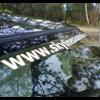Wiring a tacho? r33
Announcements
-
Similar Content
-
Latest Posts
-
By Dose Pipe Sutututu · Posted
Given you're running a 2.8 and my 2.5 is not really like for like, I suspect there could be a bit more timing you could give it. What is the kW yield per degree you're putting through it? Here's my E85 map to give you an idea, where it was I could still get another 3~4kW per degree thrown at it. -
It turns out that Setrab make a fan specifically for the oil cooler which is great and I've installed it with minimal swearing. I removed my 2x 12in push fans from the front of my aircon condenser and wired them into this. My main thermo fans kick on when I use the aircon anyway and would effectively already be working as puller fans through the condensor which is infront of the rad. The push fans (understandably) didn't really do much in the config they were previously in so now they're out. Now we're on to the "Oil fan doesn't really do much either!". Yes I'll duct it next if it does nothing in heavy use which it shouldn't. But hey, the object exists and fits great and is cool. Let me have this. The car is still in the "do my fittings leak oil now? do my wheels actually rub?" phase. I did a spirited drive on them and didn't hear or feel anything. Then I got back home and noticed there were grind marks on the inside of the rims, though I couldn't see where they were touching I got out the grinder and attacked the suspects. Note: I do not know how to use a grinder. Then I realised I had dragged my new rims across my concrete driveway before I did this drive. I didn't think I had damage at that time when I briefly looked...... but remembered this occurred after I did all the angle grinding. The grinding on the wheels in some very specific spots. It's not around the whole rim for example, which lines up with dragging it across concrete more than hitting a suspension component for even 1 full rotation. So everything is currently painted and taped up and I need to test it some more to see if it really IS rubbing, but from inside the car it doesn't feel like it is. In other news I attempted to do a before and after comparison of the heads/cam upgrade thing. Dynos lie, everything is in different measurements. Here is the data from the sandown back straight. Car go faster than before. Vroom vroom.
-
By TurboTapin · Posted
Here's my base ignition. +3 correction to redline when shooting water/meth which is always on. Looking at my old ignition table, I should be able to add 1-2 degree's next time I'm on the dyno. Let me know your thoughts. -
Given what I know now - same haha, but this was 12 years ago with second hand 740cc Nismo injectors in my S15 daily, I was too busy hunting elsewhere for the issue to even look at the injectors, running through some cleaner was a happy coincidence haha
-
Not a terrible idea. But if I ever had concerns that my injectors were sufficiently dirty to be causing me a problem, they would be out of the engine and onto the actual injector cleaner/testing bench.
-







Recommended Posts
Create an account or sign in to comment
You need to be a member in order to leave a comment
Create an account
Sign up for a new account in our community. It's easy!
Register a new accountSign in
Already have an account? Sign in here.
Sign In Now